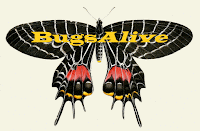Polyura eudamippus
This page has been updated - Click Here to View
Common Name:
Taxonomy:
ID Keys:
Sexual Dimorphism:
Distribution:
Flight time:
Habitat:
Life History:
Voltinism:
Larval hosts:
(all locations)
Adult food sources:
(all locations)
Photos:
(Click to view large)
the Great Nawab Photos at the bottom of the page
Arthropoda - Insecta - Lepidoptera - Nymphalidae - Charaxinae - Polyura - eudamippus (Doubleday, 1843)
wingspan - 75-120mm, wing colour - UP white/black - UN white w/black and yellow markings, eye colour - black, proboscis colour - yellow, antennae colour - black w/white spots, abdomen colour - white/grey, leg colour - white,
flight - fast
female is considerably larger than the male but similar in appearance
India, Nepal, Bhutan, Bangladesh, Myanmar, Thailand, Laos, Cambodia, Vietnam, China, Taiwan, Malaysia
most of the year
evergreen and deciduous forest up to 2500m a.s.l.
¦¦ egg 3=5 days ¦¦ instar1 7 days ¦¦ instar2 7 days ¦¦ instar3 4 days ¦¦ instar4 9 days ¦¦
¦¦ instar5 not known ¦¦ pupa not known ¦¦ Total egg-adult no known. All times approximate.
NOTE: what appears to be the only study determined a period of 30 days for the 5th instar but this was at a time when the colder months were coming and the pupa was expected to overwinter. Further study is needed on the latter stages of the lifecycle in this species.
multivoltine
Rhamnella franguloides. Rhamnella inaequilatera (Rhamnaceae), Celtis boninensis (Cannabaceae), Archidendron lucidum, Caesalpinia crista, Cassia bakeriana, Delonix regia, Millettia reticulata, Wisteria floribunda (Fabaceae), Filicium decipiens (Sapindaceae)
Actual host plant used depends upon location and availabilty of plant species.
Nectar: this species is not known to visit flowers
Other: mud puddling, animal dung, carrion, rotting fruit, tree and plant sap







